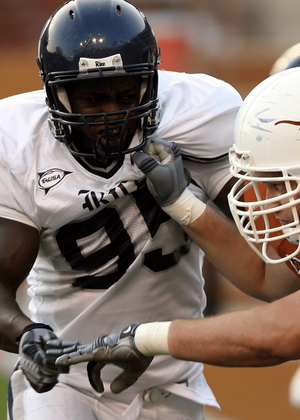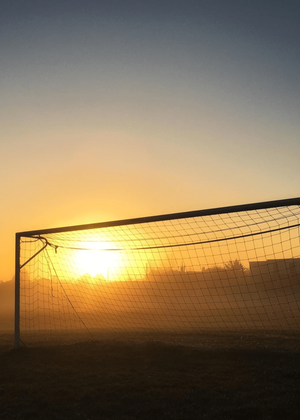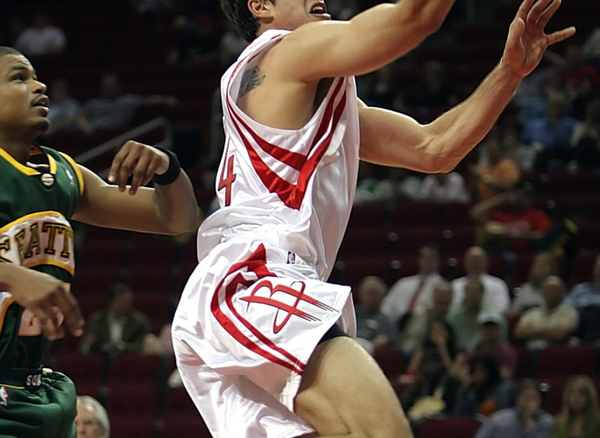Imagine a basketball game without a shot clock. It would be like watching paint dry, with teams stalling tactics to run down the game clock. The shot clock in basketball was introduced to keep the game moving at a brisk pace, ensuring that fans stay on the edge of their seats. This countdown timer forces the offensive team to attempt a field goal within a specified time, adding a layer of excitement and strategy to the sport.
The shot clock rule has revolutionized basketball, making it more dynamic and engaging. Understanding the shot clock is essential to fully appreciate the game. So let's get into this rule.
Birth of the Shot Clock
The shot clock was born out of necessity. Back in the day, teams would often hold onto the ball for extended periods, leading to low-scoring and, frankly, boring games. Enter Danny Biasone, the owner of the Syracuse Nationals, who proposed a 24-second shot clock to speed things up. This idea was implemented in the NBA in 1954, and the rest, as they say, is history.
The introduction of the shot clock increased the pace of the game and led to more scoring opportunities. Fans loved it, and it quickly became a staple in professional basketball. Today, the shot clock is an integral part of the sport, from college basketball to the NBA.
How the NBA Basketball Shot Clock Works
The shot clock is a timing device that counts down from a set number of seconds, 24 seconds in the NBA (30 seconds in college basketball). When the offensive team gains possession of the ball, the shot clock starts ticking. They must attempt a field goal before the shot clock reaches zero, or they commit a shot clock violation; turnover.
If the offensive team fails to hit the basket ring before the shot clock expires, the opposing team gains possession of the ball. This rule ensures that teams can't just sit on the ball and run down the game clock, keeping the action fast-paced and exciting.
Shot Clock Resets
The shot clock isn't always a one-and-done deal. It resets under certain conditions, such as when the offensive team grabs an offensive rebound or when the defensive team commits a foul. For instance, in the NBA, the shot clock may reset to 14 seconds after an offensive rebound, giving the team a new possession to execute plays.
Understanding when the shot clock resets is crucial for both offensive and defensive strategies. It can mean the difference between a well-timed shot and a shot clock violation. So keep an eye on that countdown timer!
Shot Clock Operator
Behind every great shot clock is a meticulous shot clock operator. This behind the scene hero ensures that the shot clock starts and stops at the right moments, maintaining the flow of the game. The shot clock operator must be vigilant, as any mistake can lead to confusion and controversy on the court.
The shot clock operator's job is no walk in the park. They must be in sync with the game clock and the scoreboard, ensuring that everything runs smoothly. It's a high-pressure role that requires sharp attention and quick reflexes.
Shot Clock Violations
This results in a turnover, giving the opposing team possession of the ball. Shot clock violations can be costly, as they halt the offensive team's momentum and give the defense a chance to regroup.
To avoid shot clock violations, teams must be aware of the countdown timer and make quick, strategic decisions. This often involves passing the ball efficiently and setting up plays that maximize their limited time.
The Impact on Offensive Strategy
The shot clock has a significant impact on offensive strategy. Teams must move quickly and efficiently to create scoring opportunities within the limited time. This often involves fast breaks, quick passes, and well-timed shots. The shot clock forces teams to be more aggressive and creative in their offensive plays.
For example, a team might use a pick-and-roll play to create an open shot before the shot clock expires. This requires precise timing and coordination among players. The shot clock adds an element of urgency, making every possession count.
The Impact on Defensive Strategy
The shot clock also affects the defense. Defenders must be aware of the shot clock and use it to their advantage. For instance, they might apply pressure to force a rushed shot or a turnover as the shot clock winds down. The shot clock can be a valuable tool for the defense, helping them disrupt the offensive team's rhythm.
A well-timed defensive play can lead to a shot clock violation, giving the defensive team possession of the ball. This can be a game-changer, especially in close games where every possession matters.
Game Flow
The shot clock plays a crucial role in maintaining the flow of the game.
The shot clock ensures that the game remains fast-paced and exciting, with plenty of scoring opportunities.
By keeping the game moving, the shot clock also helps maintain the players' energy and momentum. This leads to more dynamic and competitive games, which is a win-win for both players and fans.
Fan Engagement
Fans love the shot clock because it adds an element of suspense and excitement to the game. The ticking countdown timer creates a sense of urgency, making every possession thrilling to watch. Whether it's a buzzer-beating shot or a last-second defensive stop, the shot clock keeps fans on the edge of their seats.
The shot clock also makes the game more accessible to casual fans. With a clear time limit for each possession, it's easier to follow the action and understand the strategies at play. This helps attract new fans and grow the sport's popularity.
Player Development
The shot clock can also play a role in player development. By forcing players to make quick decisions and execute plays under pressure, it helps them develop their skills and basketball IQ. This can be especially beneficial for young players, preparing them for the faster pace of higher levels of competition.
For example, a high school player who is used to playing with a shot clock will be better prepared for the college game. The shot clock helps players develop their timing, decision-making, and overall game awareness.
Coaching
Coaches must also adapt their strategies to the shot clock. This involves designing plays that can be executed quickly and efficiently, as well as managing the game clock and shot clock to maximize scoring opportunities. The shot clock adds an extra layer of complexity to coaching, requiring careful planning and quick adjustments.
For instance, a coach might call a timeout to set up a play when the shot clock is winding down. This can help the team avoid a shot clock violation and create a high-quality scoring opportunity. The shot clock challenges coaches to be more strategic and creative in their game planning.
Game Management
Game management is another area where the shot clock plays a crucial role. Teams must be aware of both the game clock and the shot clock, managing their possessions to maximize scoring opportunities and control the pace of the game. This requires careful coordination and communication among players and coaches.
For example, a team might use a deliberate, slow-paced offense to run down the game clock when they have a lead. Conversely, they might push the pace and look for quick shots when they need to catch up. The shot clock adds an extra layer of strategy to game management, making it a key factor in the outcome of the game.
End-of-Game Scenarios
The shot clock becomes especially important in end-of-game scenarios. With the game clock winding down, teams must manage their possessions carefully to maximize their chances of scoring and winning the game. This often involves strategic use of timeouts, quick plays, and precise execution.
For example, a team might use a quick inbound play to get a shot off before the shot clock expires. This requires careful planning and execution, as well as awareness of the game clock and shot clock. The shot clock adds an element of drama and excitement to end-of-game scenarios, making them some of the most thrilling moments in basketball.
Overtime
Overtime periods also involve the shot clock, adding an extra layer of excitement and strategy to these high-stakes moments. Teams must manage their possessions carefully, balancing the need to score quickly with the need to control the game clock. The shot clock ensures that overtime periods remain fast-paced and competitive.
For example, a team might use a quick pick-and-roll play to create an open shot in overtime. This requires precise timing and execution, as well as awareness of the shot clock. The shot clock adds an extra layer of strategy and excitement to overtime periods, making them some of the most memorable moments in basketball.
International Basketball
The shot clock is also used in international basketball, with some variations in the rules. For example, FIBA (the International Basketball Federation) uses a 24-second shot clock, similar to the NBA. This ensures that international games remain fast-paced and exciting, with plenty of scoring opportunities.
International teams must adapt their strategies to the shot clock, just like their counterparts in the NBA and college basketball. This involves quick decision-making, efficient passing, and precise execution of plays. The shot clock adds an extra layer of excitement and strategy to international basketball, making it a key factor in the outcome of games.
Is there a shot clock in high school basketball?
While the shot clock is standard in professional and college basketball, its use in high school basketball varies. Some states have adopted the shot clock, while others have not. The debate continues, with proponents arguing that it leads to a faster pace and more exciting games, while opponents believe it adds unnecessary pressure on young players.
In states where the shot clock is used, high school teams must adapt their strategies accordingly. This can be a valuable learning experience, preparing players for the faster pace of college and professional basketball.
The Future of the Shot Clock
The shot clock has come a long way since its introduction in 1954, and it continues to evolve. Advances in technology have led to more accurate and reliable shot clocks, ensuring that the game runs smoothly. There is also ongoing debate about the optimal length of the shot clock, with some advocating for shorter times to increase the pace of the game even further.
As basketball continues to grow and evolve, the shot clock will remain a crucial part of the sport. It ensures that the game remains fast-paced, exciting, and engaging for fans, while also adding an extra layer of strategy and complexity for players and coaches.
Basketball Shot Clocks FAQ
Browse through our frequently asked questions section to learn more.
What is a shot clock in basketball?
A shot clock in basketball is a timing device that limits the amount of time an offensive team has to attempt a field goal. If a team fails to take a shot within this time frame, it results in a shot clock violation and possession of the ball is given to the opposing team.
What happens if the shot clock expires before a shot is taken?
If the shot clock expires before the offensive team attempts a field goal, it results in a shot clock violation. The opposing team then gains possession of the ball.
How does the shot clock reset?
The shot clock resets under certain conditions, such as when the offensive team grabs an offensive rebound or when the defensive team commits a foul. In the NBA, the shot clock resets to 14 seconds after an offensive rebound.
Is the shot clock used in high school basketball?
The use of the shot clock in high school basketball varies by state. Some states have adopted the shot clock, while others have not. The debate continues, with proponents arguing that it leads to a faster pace and more exciting games, while opponents believe it adds unnecessary pressure on young players.
Summary
The shot clock in basketball is a game-changer, ensuring a faster pace and more scoring opportunities. It impacts both offensive and defensive strategies, adding an extra layer of excitement and complexity to the game. From high school basketball to the NBA and international competitions, the shot clock is an integral part of the sport, keeping fans on the edge of their seats and players on their toes.









